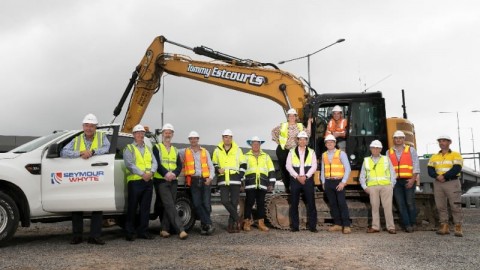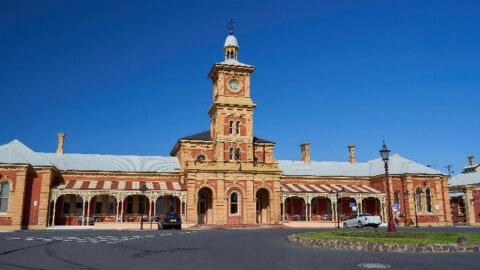The Queensland Major Contractors Association’s Queensland Major Projects Pipeline Report has been released, evaluating the state’s medium-term major infrastructure projects and current market outlook.
The report is authored by Queensland Major Contractors Association, Construction Skills Queensland and Oxford Economics.
The 12th edition report states there is a resilient engineering construction sector in Queensland, forecasting a robust increase in project activity despite the prevailing economic challenges.
Project pipeline grows to $92B
The report reveals a 29 per cent year-on-year growth, with the current five-year pipeline now valued at a record $92 billion.
It also shows that funded projects have seen a notable increase to $57 billion, driven by significant investments in utilities and mining across the state’s key regions. The funded projects over the next few years, going forward, amount to an average of $10.5-12 billion per year with the peak of funded activity in the 2026/27 year.
The report also underscores the challenges of high unfunded activity, with a forecasted peak in 2026/27, and the imperative for strategic funding and financing solutions to sustain momentum.
Queensland Major Contractors Association CEO, Andrew Chapman, said the state is witnessing a historic upswing in the industry’s trajectory.
“The next five years will be crucial as we navigate the complexities of cost, capacity, and productivity to deliver on Queensland’s $92 billion project pipeline,” Mr Chapman said.
“The diversity of work in the pipeline is extensive and covers all the sectors with planned works from transport through to water and the energy transition infrastructure and mineral resource developments.
“A diversified project portfolio ensures sustainable growth and stability for Queensland’s economy. It is also very encouraging to see that the proportion of credibly funded projects has grown, providing certainty for asset owners, the industry and our supply partners who will support projects across Queensland.
“The public sector continues to play a significant role, funding over half of the total pipeline activity and while we are seeing increased investment from the private sector in renewables, energy and resources projects, we still believe more can be done in the planning and approval process to boost private sector investment in Queensland further, as well as looking at co-funding opportunities,” Mr Chapman said.
“Government and industry have a dual role to play in getting the settings right to deliver the pipeline efficiently and effectively. At the present time, there is work to do to address this.
Regional breakdown
Major project outlooks differ considerably by region. Compared to 2022, funded work has declined by 23 per cent in the Ipswich-Toowoomba-Logan region and 33 per cent in Darling Downs-Maranoa, while increasing in all other areas.
Wide Bay and Townsville have received the highest growth in pipeline-funded work at 497 per cent and 196 per cent respectively with projects in the utilities (specifically electricity and defence), mining and heavy industry sectors driving growth.
“While we celebrate the growth in regions like Wide Bay, Fitzroy, and Brisbane, we remain vigilant about the declines in other areas, particularly as major projects are reviewed by the Commonwealth and marked for deferment or Cancellation,” Mr Chapman said.
“This is most noticeable in the Ipswich-Toowoomba-Logan region and Darling Downs-Maranoa as Inland Rail’s review and changes in scope impact the overall pipeline.
“Our focus is on balanced and proportionate development across all regions, and while we understand that disparities will occur, there is a concern across the industry about how tightening Commonwealth investment will negatively impact regional Queensland.”
Workforce development
Construction Skills Queensland Acting CEO, Geoff Clare, said the new wave of construction activity would challenge an industry already struggling with labour shortages.
“The significant projected uplift in the construction industry in Queensland will push labour demand to record levels,” Mr Clare said.
“With shortages in construction already prevalent across all occupations, the industry’s struggle to find workers will intensify.
“This will be acutely felt in the delivery of civil infrastructure projects and in the regions.
“Today’s civil construction workforce of around 34,000 is already struggling to meet current demands – with open vacancies twice the levels of those seen before the pandemic.
“By mid-2028, the monthly headcount demand for the civil infrastructure pipeline is expected to reach 50,000 – double current levels in this sector,” Mr Clare said.
Recommendations
To successfully deliver the state’s $92 billion pipeline, Queensland Major Contractors Association advocates for increasing capacity, enhancing skills and technology adoption, and managing cost escalation risks while embracing opportunities presented by innovative and sustainable construction techniques and collaborative procurement strategies.
















